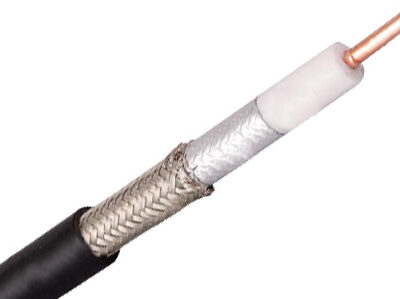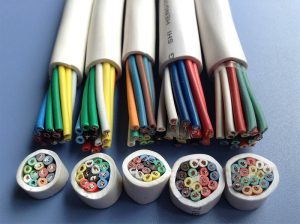

There are many types of cables. Power cables and communication cables are two types of cable products. Although both communication cables and power cables are wires used to transmit signals and energy, there are differences in the use of the environment, transmission characteristics, equipment requirements, iyo wixi la mida. What is the difference between similar cables and cables?


Communication cables are used for data transmission, communication connections, iwm. The signals to be transmitted are mainly high-frequency electrical signals. Communication cables use many special designs to meet the requirements of high speed, low BER, and good anti-interference. Since communication cables transmit weak signals, an outer shield is often required to minimize interference, and the internal conductor will be a thinner single strand or twisted wire for more sensitive signal transmission.
Communication cable according to performance is divided into: shielded communication cable, armored communication cable, and flame retardant communication cable.
1 Single-conductor: refers to the most primitive communication cable, a single-conductor circuit, with the earth as the return line.
2 Symmetrical cable: by two identical wires under ideal conditions to form a circuit.
3 Coaxial cable: will be on the same axis as the inner and outer conductors to form the outer conductor surrounding the inner conductor while both are insulated.
If by the application of occasions, communication cables can be divided into the following three categories.
1 Long-distance cable: Long transmission distance, generally for multiplexed
Use, most directly buried in the ground, in a few cases the use of overhead installation, or installed in the pipeline.
2 Municipal cable: cable wires “in pairs”, and the number of pairs. Generally installed in the pipeline, some municipal cables are attached to the building or overhead installation.
3 Bureau cable: mainly used in the telecommunications bureau of communications cables, generally installed in the distribution frame, but also installed in the trough. Bureau cables are used in telecommunications offices between transmission equipment and switching equipment, as well as other bureau equipment inside.
Power cables are used to transmit high power currents with high electrical characteristics and are widely used in power systems, mines, construction sites, and other occasions. Power cables generally use a multicore design to facilitate the transmission of three-phase current, and the diameter of the conductor, material, and other very strict requirements to ensure the transmission effect and safety.
Communication cables adopt a four-layer structure, such as insulation layer-copper foil shielding layer-insulation layer-outer sheath, to meet the requirements of high-speed rate, low BER, and good anti-interference.
Power cables, dhanka kale, adopt a four-layer structure, such as conductor-insulation layer-armor layer-outer sheath, to fully protect personal and equipment safety.
Communication cables are mainly used in data centers, baahinta, isgaarsiinta, computers, monitoring, and many other areas that require signal transmission.
Power cables, dhanka kale, are mainly used in the power transmission industry, mines, construction sites, and other fields.
Communication cables have a variety of laying methods such as overhead, direct burial, pipeline underwater, iwm. They have a wider transmission band, larger communication capacity, less interference from the outside world, and can transmit telephones, telegrams, data images, iwm. They are used in the transmission of audio and digital signals. It refers to the cable used for near-distance audio communication long-distance high frequency carrier and digital communication and signal transmission.
Dear partners and customers: January 29th, 2025 is the Chinese Lunar New Year – Spring…
Copper wire is a fundamental component in the world of electrical engineering and electronics, valued…
Announcement To all customers and partners, Recently, there has been sufficient evidence that other…
On the occasion of New Year 2025, ZMS Cable wishes every customer and partner a…
The European medical industry has witnessed significant advancements in recent years, driven by the integration…
The successful launch of a rocket involves one of the most complex engineering feats imaginable,…